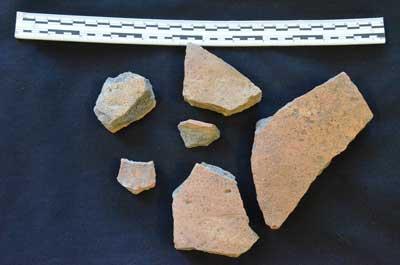Blake de Pastino
Source -http://westerndigs.org/first-evidence-found-of-storied-battle-that-stopped-spains-eastward-expansion/
Nearly 300 years ago, two great alliances collided on the Great Plains in a battle that changed the course of American history. But until now, no physical evidence of the storied conflict had ever been found.
In the summer of 1720, where the Platte River meets the Loup in eastern Nebraska, Spanish soldiers, New Mexican settlers and their Pueblo and Apache allies clashed with warriors from the Pawnee and Oto nations of the Plains.
In a daybreak raid, the Pawnee and the Oto — possibly with the support of French traders — routed the Spanish, killing their commander, Don Pedro de Villasur, along with 35 soldiers and 10 Pueblo scouts.
The attack proved to be a turning point in the Spanish conquest, marking the end of the empire’s eastward encroachment across the continent.
Villasur’s defeat was well-documented by survivors at the time, but perhaps nowhere was it more famously captured than in a pair of intricate tableaux painted on bison hides.

A detail in the second of the two bison hides — known as the Segesser Hide Paintings — depicts the attack on Villasur’s party in eastern Nebraska. The hides are now housed in Santa Fe’s Palace of the Governors museum.
Until now, the paintings have been the most vivid remaining records of the momentous battle.
But archaeologists say they’ve found what they think are its first known, if somewhat unexpected, artifacts: fragments of Spanish olive jars.
Discovered in suburban Omaha at a site called Eagle Ridge, more than a hundred kilometers from where the battle likely took place, the sherds are the only tangible relics of this pivotal episode in Plains history, said Dr. David Hill, of Metro State University, in an interview.
“The olive jar sherds from the Eagle Ridge site are the easternmost evidence of Spanish intrusion onto the Great Plains,” he said. “They are also the oldest European ceramics recovered in Nebraska by over a century.”
The fragments are thought to be remnants of booty looted from the victims after Villasur’s defeat. Archaeologists found them while excavating more than 40 underground storage pits with a host of other artifacts, like native ceramics and projectile points, that suggest Eagle Ridge was inhabited by the Oto, or perhaps the neighboring Ioway.
“The olive jar sherds recovered from the Eagle Ridge site are the only physical evidence of the battle,” Hill said, “so one or more of the Oto or Ioway village residents of the site may have been participants in the battle against Villasur. The sherds may have been one or more complete vessels and were thus loot from the engagement.”
Such jars, or boijas, were traditionally used for shipping olives, but in the New World, settlers recycled them as vessels for all sorts of supplies, like medicine, oil, and wine.
The widespread use of boijas in Spanish territory allowed Hill to compare the Nebraska fragments with other jars found in Texas and New Mexico.

These ceramic fragments are thought to be remnants of booty looted from victims after the site of Villasur’s defeat. Archaeologists found them while excavating more than 40 underground storage pits associated with the Oto and Ioway people, near modern-day Omaha. (Courtesy David Hall)
His analysis revealed important similarities among the samples, like granite-based sand that had been added to the pottery mixture, unlike indigenous ceramics made using natural clays, and telltale horizontal “throwing marks” that are still visible on the vessels’ interiors.
“Olive jars were thrown on a potters wheel, a forming technique unknown in the New World,” Hill said. “The parallel throwing marks on the exterior of the olive jar sherds are evidence of this technique.”
Hill will publish his findings in an upcoming edition of the journal Kiva, with co-authors John R. Bozell and Gayle F. Carlson of the Nebraska State Historical Society.
The artifacts they’ve identified, they write, “represent physical evidence for the easternmost expansion of the Spanish Empire in North America in the eighteenth century.
“The presence of these sherds in an Ioway or Oto settlement, possibly as loot from the battle, also marks the end of Spanish incursion onto the Great Plains.”